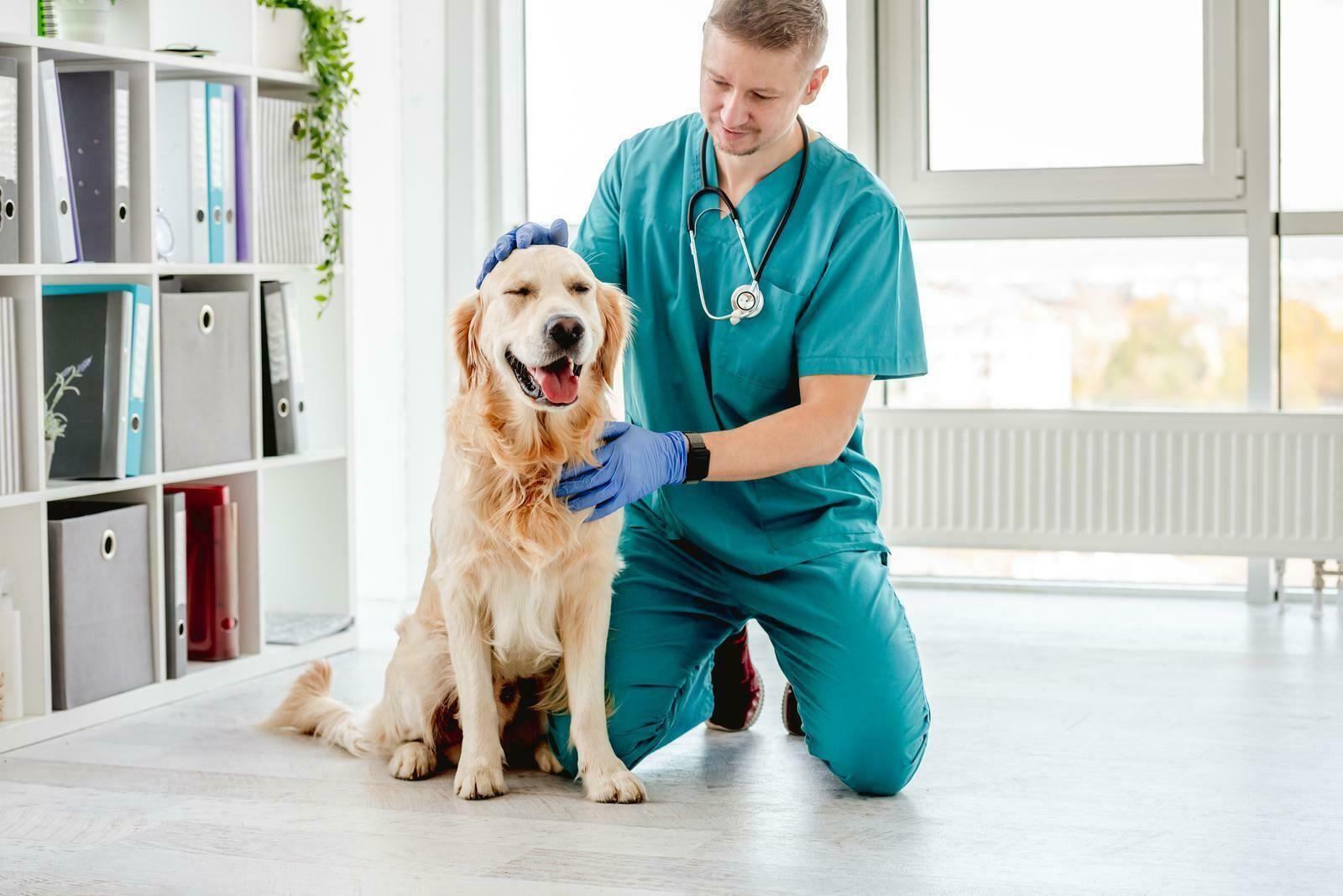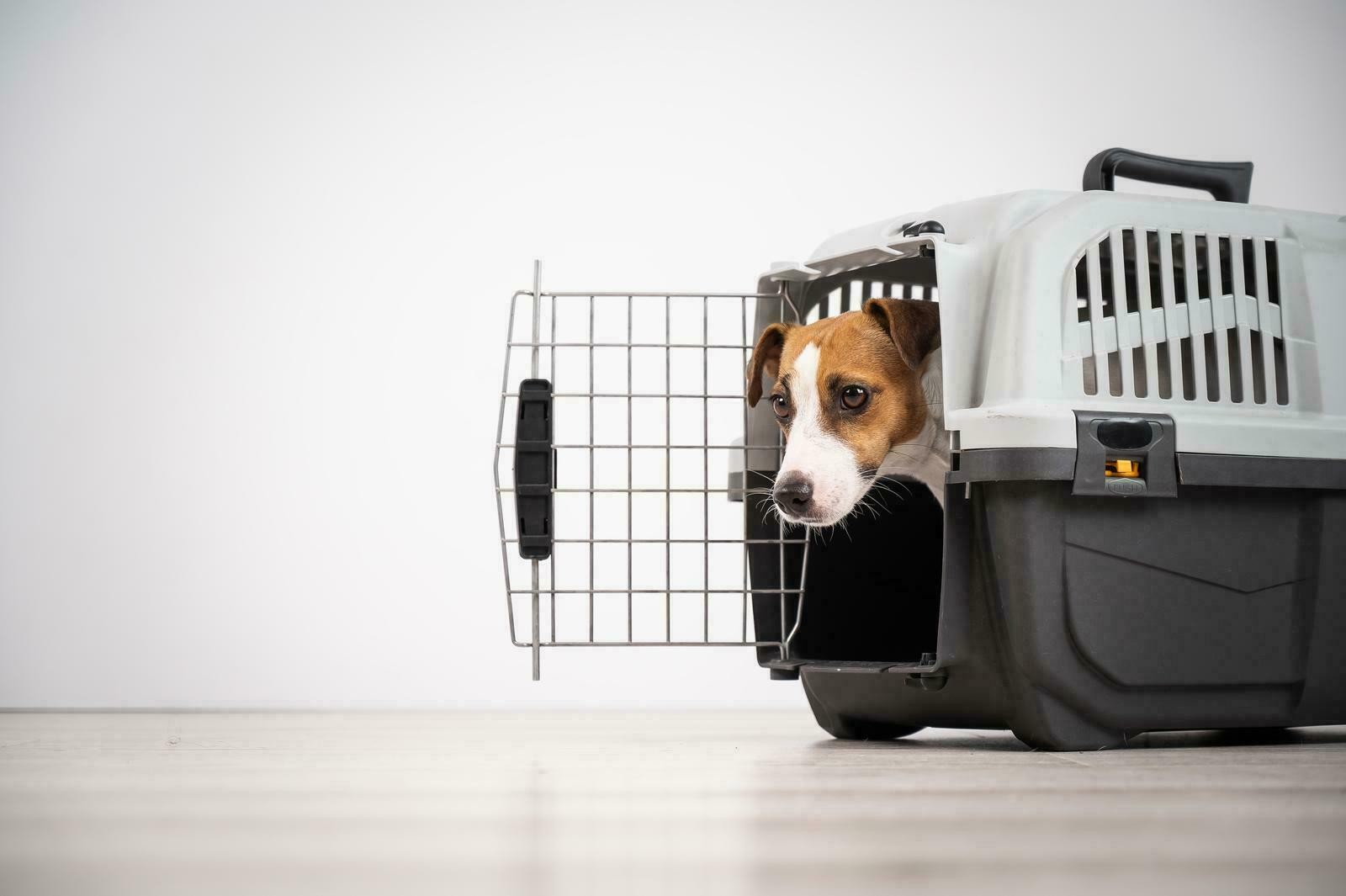Sending a pet to another state can be a daunting task, but with careful planning and the right resources, it can be a safe and stress-free experience for both you and your furry friend; PETS.EDU.VN is here to provide guidance. Explore reliable pet relocation services, ensuring your beloved companion arrives safely and comfortably.
1. Understanding the Basics of Interstate Pet Transport
Interstate pet transport involves moving your pet across state lines, which requires adherence to specific regulations and guidelines. These regulations vary by state and may include health certificates, vaccination records, and breed-specific restrictions. It’s crucial to research the requirements of both the origin and destination states to ensure compliance. Failure to comply can result in delays, fines, or even quarantine for your pet. Several factors influence the complexity and cost of sending a pet across state lines, including:
- Distance: Longer distances generally mean higher transport costs.
- Pet Size and Breed: Larger animals and certain breeds may require specialized handling and carriers.
- Mode of Transport: Options include air travel, ground transport, and professional pet relocation services.
- Required Documentation: Health certificates, vaccination records, and other paperwork must be up-to-date and readily available.
- Time of Year: Extreme weather conditions can impact transport options and safety.
1.1. Why Choose Professional Pet Transport?
While it may be tempting to handle pet transport yourself, professional pet transport services offer several advantages. These services have the experience and expertise to navigate the complexities of interstate pet travel, ensuring your pet’s safety and comfort. They can also handle all the necessary logistics, including booking flights, arranging ground transport, and obtaining required documentation. Furthermore, professional pet transporters are trained to handle pets with care and compassion, minimizing stress and anxiety for your furry friend.
2. Essential Steps Before You Send A Pet To Another State
Before sending your pet to another state, several essential steps must be taken to ensure a smooth and safe journey.
2.1. Veterinary Check-up and Health Certificate
A comprehensive veterinary check-up is the first and most crucial step in preparing your pet for interstate travel. Your veterinarian will assess your pet’s overall health, administer any necessary vaccinations, and issue a Certificate of Veterinary Inspection (CVI), also known as a health certificate. This certificate verifies that your pet is healthy and free from contagious diseases, and it is often required for interstate travel.
- Vaccinations: Ensure your pet is up-to-date on all required vaccinations, including rabies, distemper, parvovirus, and adenovirus.
- Parasite Prevention: Protect your pet from fleas, ticks, and heartworms with appropriate preventative medications.
- Health Screening: Your veterinarian may recommend additional health screenings, such as blood tests and fecal exams, to detect any underlying health issues.
- CVI Validity: Keep in mind that health certificates typically have a limited validity period, often 10-30 days, so plan your pet’s travel accordingly.
PETS.EDU.VN reminds you that some states have specific requirements regarding vaccinations and health screenings, so it’s essential to consult with your veterinarian and research the regulations of the destination state.
2.2. Microchipping and Identification
Microchipping is a simple yet invaluable procedure that can significantly increase the chances of reuniting with your pet if they get lost during transport. A microchip is a small, electronic chip implanted under your pet’s skin, containing a unique identification number. This number is registered in a database with your contact information, allowing animal shelters, veterinary clinics, and other organizations to quickly identify your pet and contact you if they are found.
- Ensure Accurate Information: Verify that your contact information in the microchip registry is up-to-date.
- Consider a Collar and Tag: In addition to a microchip, equip your pet with a collar and identification tag containing your name, phone number, and address.
- Temporary Tag for Travel: Consider adding a temporary tag with the destination address and contact information for the duration of the trip.
2.3. Choosing the Right Pet Carrier
Selecting the appropriate pet carrier is crucial for ensuring your pet’s safety and comfort during transport. The carrier should be appropriately sized, well-ventilated, and sturdy enough to withstand the rigors of travel.
- Size Matters: The carrier should be large enough for your pet to stand up, turn around, and lie down comfortably.
- Ventilation: Ensure the carrier has adequate ventilation on all sides to provide fresh air.
- Material: Choose a carrier made of durable materials, such as hard plastic or metal, that can withstand bumps and jostling.
- Leak-Proof Bottom: Opt for a carrier with a leak-proof bottom to contain any accidents.
- Familiar Bedding: Line the carrier with soft, familiar bedding to provide comfort and reduce anxiety.
- Acclimation: Allow your pet to acclimate to the carrier before the trip by placing it in a familiar area and encouraging them to enter and explore it.
2.4. Familiarize Your Pet with the Travel Carrier
Before the trip, familiarize your pet with the carrier. This can help reduce their stress and anxiety during the journey. Leave the carrier open in a room where your pet spends time, and place treats or toys inside to encourage them to explore it. Gradually increase the amount of time your pet spends in the carrier, and take them on short trips to help them get used to the motion.
2.5. Pre-Travel Preparations
- Feeding and Hydration: Avoid feeding your pet a large meal right before travel, as this can increase the risk of motion sickness. Provide small amounts of water to keep them hydrated.
- Potty Break: Take your pet for a potty break immediately before placing them in the carrier.
- Comfort Items: Include familiar toys or blankets in the carrier to provide comfort and security.
- Identification: Attach a temporary identification tag to the carrier with your contact information and destination address.
3. Transportation Options: Send A Pet To Another State
There are several transportation options available for sending a pet to another state, each with its own advantages and disadvantages.
3.1. Airline Travel
Airline travel is a common option for long-distance pet transport, but it’s essential to understand the risks and regulations involved. Most airlines allow pets to travel in the cargo hold or as carry-on luggage, depending on their size and breed. However, airline travel can be stressful for pets due to the unfamiliar environment, loud noises, and temperature fluctuations.
- Cargo Hold: Pets traveling in the cargo hold are placed in a pressurized and temperature-controlled compartment. However, this option can be stressful due to the unfamiliar environment and handling by airline staff.
- Carry-On: Small pets that can fit comfortably under the seat may be allowed to travel in the cabin as carry-on luggage. This option allows you to keep your pet with you during the flight, but it’s subject to size and weight restrictions.
- Airline Restrictions: Be aware that some airlines have breed restrictions and may not transport certain breeds known to be at higher risk of respiratory problems.
3.1.1. Tips for Airline Travel with Pets
- Choose a Pet-Friendly Airline: Research airlines that have experience transporting pets and prioritize their safety and comfort.
- Book a Direct Flight: Opt for a direct flight to minimize the stress of layovers and transfers.
- Travel During Off-Peak Hours: Consider traveling during off-peak hours to avoid crowded airports and potential delays.
- Inform Airline Staff: Notify airline staff that you are traveling with a pet and inquire about their procedures for handling animals.
- Provide Water and Food: Attach a water bottle and small amount of food to the carrier in case of delays.
3.2. Ground Transportation
Ground transportation is a popular alternative to air travel, especially for pets that are sensitive to stress or have health concerns. Ground transport involves hiring a professional pet transport company or driving your pet yourself.
- Professional Pet Transport: Professional pet transport companies offer door-to-door service and provide trained drivers who are experienced in handling animals. These companies typically use climate-controlled vehicles and provide regular updates on your pet’s progress.
- Driving Yourself: Driving your pet yourself allows you to maintain control over the transport process and provide personalized care. However, it can be time-consuming and require careful planning.
3.2.1. Tips for Ground Transportation with Pets
- Plan Your Route: Map out your route in advance and identify pet-friendly rest stops and accommodations.
- Provide Frequent Breaks: Stop frequently to allow your pet to stretch their legs, relieve themselves, and drink water.
- Secure Your Pet: Use a pet carrier or seatbelt harness to keep your pet safe and secure in the vehicle.
- Climate Control: Maintain a comfortable temperature in the vehicle and ensure adequate ventilation.
- Avoid Leaving Your Pet Unattended: Never leave your pet unattended in a parked car, especially in hot or cold weather.
3.3. CitizenShipper: A Reliable Online Marketplace
CitizenShipper is an online marketplace that connects pet owners with independent pet transporters. This platform offers a convenient and cost-effective way to find reliable drivers who are willing to transport your pet across state lines.
- Reverse Bidding System: CitizenShipper uses a reverse bidding system, allowing you to negotiate the best possible price for your pet transport.
- Driver Profiles and Reviews: You can review driver profiles and read reviews from previous customers to assess their experience and reliability.
- Pet Protection Plan: CitizenShipper offers a Pet Protection Plan on every shipment, providing additional peace of mind.
4. Legal and Regulatory Requirements
Interstate pet transport is subject to various legal and regulatory requirements, which vary by state. It’s essential to understand these requirements to ensure compliance and avoid potential penalties.
4.1. State-Specific Regulations
Each state has its own regulations regarding pet import, including requirements for health certificates, vaccinations, and quarantine. Some states may also have breed-specific restrictions or require additional permits for certain animals.
- Research Destination State: Before transporting your pet, research the specific regulations of the destination state.
- Contact State Veterinary Office: Contact the state veterinary office or department of agriculture for the most up-to-date information.
- Consult with Your Veterinarian: Discuss the state-specific regulations with your veterinarian to ensure your pet meets all requirements.
4.2. Health Certificates and Vaccination Records
As mentioned earlier, a health certificate (CVI) is typically required for interstate pet transport. This certificate verifies that your pet is healthy and free from contagious diseases. In addition to a health certificate, you may also need to provide proof of vaccination for certain diseases, such as rabies.
- Keep Records Accessible: Keep copies of your pet’s health certificate and vaccination records readily accessible during transport.
- Digital Copies: Consider creating digital copies of these documents and storing them on your phone or in the cloud.
4.3. Breed-Specific Legislation
Some states and municipalities have breed-specific legislation (BSL) that restricts or prohibits the ownership of certain dog breeds, such as pit bulls, Rottweilers, and German Shepherds. If you are transporting a dog that may be subject to BSL, it’s crucial to research the local laws and regulations and take appropriate precautions.
- Research Local Laws: Before transporting your dog, research the local laws and regulations of the destination city or county.
- Comply with Requirements: If BSL applies, comply with all requirements, such as registration, insurance, and muzzle requirements.
5. Ensuring Your Pet’s Comfort and Safety During Transit
Regardless of the transportation method you choose, it’s essential to take steps to ensure your pet’s comfort and safety during transit.
5.1. Reducing Stress and Anxiety
- Familiar Items: Include familiar toys, blankets, or clothing items in the carrier to provide comfort and security.
- Calming Aids: Consider using calming aids, such as pheromone sprays or calming treats, to reduce anxiety.
- Minimize Stimulation: Minimize exposure to loud noises, bright lights, and unfamiliar people.
- Regular Updates: If possible, arrange for regular updates from the transporter to check on your pet’s well-being.
5.2. Providing Food and Water
- Hydration: Provide access to fresh water throughout the journey. You can use a water bottle or a spill-proof bowl.
- Small Meals: Offer small, frequent meals to prevent hunger and nausea.
- Familiar Food: Use your pet’s regular food to avoid digestive upset.
5.3. Maintaining Hygiene
- Potty Breaks: Provide frequent opportunities for your pet to relieve themselves.
- Absorbent Bedding: Line the carrier with absorbent bedding to contain any accidents.
- Cleaning Supplies: Carry cleaning supplies, such as paper towels and disinfectant, to clean up any messes.
6. Addressing Potential Problems and Emergencies
Despite careful planning, unexpected problems and emergencies can arise during pet transport. It’s essential to be prepared to handle these situations effectively.
6.1. Motion Sickness
- Medication: If your pet is prone to motion sickness, consult with your veterinarian about medication options.
- Avoid Feeding Before Travel: Avoid feeding your pet a large meal right before travel.
- Fresh Air: Provide fresh air and ventilation.
6.2. Anxiety and Stress
- Calming Aids: Use calming aids, such as pheromone sprays or calming treats.
- Comfort Items: Provide familiar toys or blankets.
- Reassurance: Speak to your pet in a calm and reassuring voice.
6.3. Escape or Loss
- Microchip and Identification: Ensure your pet is microchipped and wearing identification tags.
- Contact Local Authorities: If your pet escapes or gets lost, contact local animal shelters, veterinary clinics, and law enforcement agencies.
- Online Resources: Utilize online resources, such as social media and lost pet websites, to spread the word.
6.4. Medical Emergencies
- Veterinarian Contact Information: Carry your veterinarian’s contact information and the contact information for veterinary clinics along your route.
- Pet First Aid Kit: Pack a pet first aid kit with essential supplies, such as bandages, antiseptic wipes, and pain relievers.
- Emergency Veterinary Care: In case of a medical emergency, seek immediate veterinary care.
7. Post-Transport Care and Acclimation
Once your pet arrives at their destination, it’s essential to provide proper post-transport care and allow them time to acclimate to their new environment.
7.1. Veterinary Check-Up
Schedule a follow-up veterinary check-up to ensure your pet is healthy and adjusting well.
7.2. Gradual Introduction to New Environment
Introduce your pet to their new home gradually, starting with a small, familiar space.
7.3. Patience and Reassurance
Be patient and provide plenty of reassurance as your pet adjusts to their new surroundings.
7.4. Maintaining Routine
Establish a consistent routine for feeding, exercise, and playtime to help your pet feel secure.
8. Cost Considerations For Pet Transport
The cost of sending a pet to another state can vary widely depending on several factors, including:
- Distance: Longer distances generally mean higher transport costs.
- Pet Size and Breed: Larger animals and certain breeds may require specialized handling and carriers, increasing costs.
- Mode of Transport: Air travel tends to be more expensive than ground transport.
- Services Included: Some transport services offer additional amenities, such as door-to-door service, climate-controlled vehicles, and regular updates, which can increase costs.
Here’s a general overview of the potential costs associated with different pet transport options:
| Expense | Average Cost | Notes |
|---|---|---|
| Health Certificate | $50 – $200 | Cost varies depending on the veterinarian and the required tests. |
| Pet Carrier | $50 – $300 | Price depends on size, material, and features. |
| Airline Travel (Cargo) | $200 – $1,000+ | Costs vary based on airline, distance, and pet size. |
| Airline Travel (Carry-On) | $125 – $250 per flight | Limited to small pets that can fit under the seat. |
| Ground Transport | $0.50 – $1.00 per mile | Rates vary based on distance, pet size, and additional services. |
| Professional Pet Transport | $500 – $2,000+ | Includes door-to-door service, climate-controlled vehicles, and care. |



Note: These are estimated costs and may vary. It’s always best to get quotes from multiple transport providers to compare prices.
9. Success Stories: Real-Life Pet Transport Experiences
Hearing about successful pet transport experiences can provide reassurance and inspire confidence. Here are a few examples of pets that have safely traveled across state lines:
- Buddy, the Golden Retriever: Buddy was transported from California to New York via ground transport. His owner, Sarah, was thrilled with the service and praised the driver’s professionalism and care.
- Luna, the Siamese Cat: Luna flew from Florida to Washington as carry-on luggage with her owner, Emily. Emily appreciated the airline’s pet-friendly policies and the ease of traveling with Luna in the cabin.
- Rocky, the French Bulldog: Rocky was transported from Texas to Illinois using CitizenShipper. His owner, Michael, was impressed with the platform’s ease of use and the competitive pricing.
These success stories demonstrate that with proper planning and the right resources, sending a pet to another state can be a positive and rewarding experience.
10. Resources and Support for Pet Owners
Navigating the complexities of interstate pet transport can be overwhelming. Fortunately, numerous resources and support systems are available to assist pet owners.
- PETS.EDU.VN: PETS.EDU.VN offers a wealth of information on pet care, including articles, guides, and resources on pet transport.
- American Veterinary Medical Association (AVMA): The AVMA provides resources on pet health, travel, and welfare.
- International Pet and Animal Transportation Association (IPATA): IPATA is a professional organization for pet transport companies, offering resources and certification programs.
- State Veterinary Offices: State veterinary offices can provide information on state-specific regulations and requirements.
- Online Forums and Communities: Online forums and communities can provide a supportive environment for pet owners to share information and experiences.
By utilizing these resources and support systems, you can navigate the process of sending a pet to another state with confidence and ensure a safe and stress-free journey for your furry friend.
Looking for reliable pet transport services and expert advice? Visit PETS.EDU.VN today! Contact us at 789 Paw Lane, Petville, CA 91234, United States. Whatsapp: +1 555-987-6543.
Frequently Asked Questions (FAQ) About Sending A Pet To Another State
-
What documents do I need to send my pet to another state? You’ll typically need a health certificate (CVI) from a licensed veterinarian, proof of rabies vaccination, and possibly other state-specific documents. Always check the requirements of both the origin and destination states.
-
How far in advance should I book pet transport? It’s best to book as early as possible, especially if you’re using air travel or a professional transport service. Booking 2-3 months in advance is recommended.
-
Is it safe for my pet to travel in the cargo hold of an airplane? While airlines take precautions, cargo travel can be stressful. Consider all options, including ground transport, especially for sensitive pets.
-
What if my pet gets sick during transport? Professional pet transport services have protocols for handling emergencies and can seek veterinary care if needed. Make sure you provide your pet’s medical history and your veterinarian’s contact information.
-
Can I ship my pet internationally? International pet transport has more complex regulations. Consult with a professional pet relocation service experienced in international travel.
-
How do I choose a reputable pet transport company? Check reviews, ask for references, and verify their credentials and insurance. Look for companies that are members of IPATA.
-
What size crate do I need for my pet? The crate should be large enough for your pet to stand, turn around, and lie down comfortably. Measure your pet and consult with the transport company for specific recommendations.
-
What can I do to reduce my pet’s anxiety during travel? Use familiar bedding, toys, and calming aids. A Thundershirt or pheromone diffuser can help.
-
What are the breed restrictions for pet transport? Some airlines and states have breed restrictions, particularly for brachycephalic (short-nosed) breeds like Bulldogs and Pugs. Check with the airline or transport company.
-
How much water and food should I provide for my pet during transport? Provide a water bottle or spill-proof bowl and a small amount of food. Overfeeding can cause discomfort.
We hope this comprehensive guide has provided valuable information on sending a pet to another state. Remember, careful planning, research, and the right resources can ensure a safe and stress-free journey for your beloved companion. Don’t hesitate to seek professional assistance from pet transport services and veterinary experts to navigate the complexities of interstate pet travel. pets.edu.vn is always here to support you and your furry friend every step of the way.
